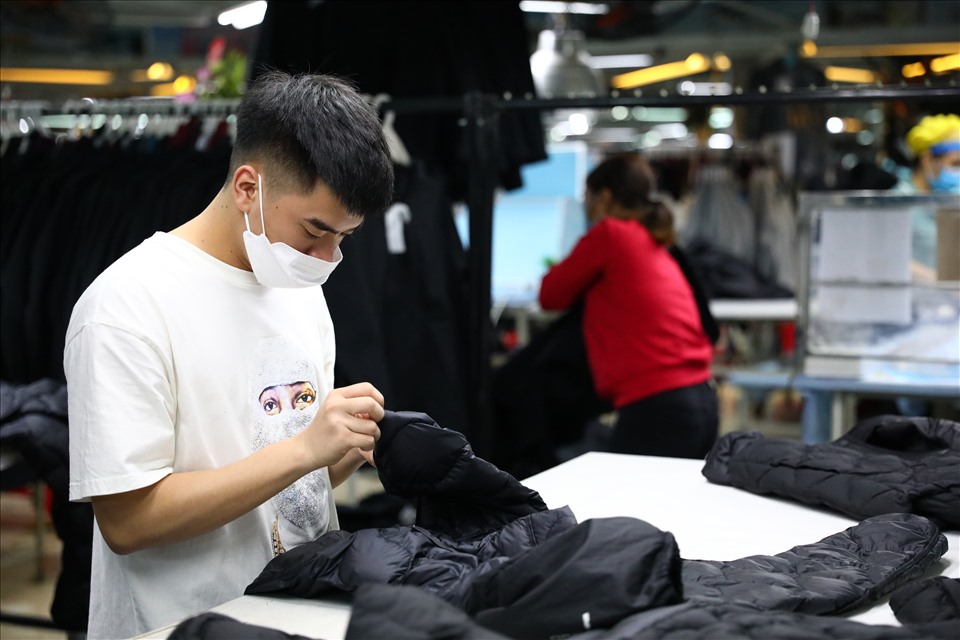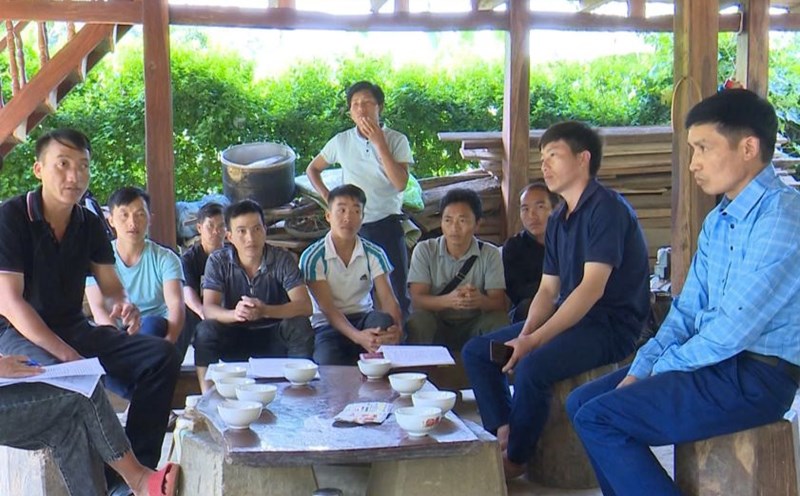Vietnam's "billion-dollar industry" rises to the top of export market share to the US
Mr. Cao Huu Hieu - General Director of Vietnam National Textile and Garment Group (Vinatex) said that in 2024, the textile and garment market has flourished. Vietnam's textile and garment exports are forecast to reach the export target of 44 billion USD in 2024.
For Vinatex, export turnover in the first 9 months of 2024 reached nearly 1.5 billion USD, an increase of more than 7% over the same period in 2023. Revenue in the first 9 months completed 73.6% of the plan, an increase of 2% over the same period; profit was equal to 80% of the plan, an increase of more than 70% over the same period.
In particular, the bright spot is that Vietnam's textile and garment industry has risen to the top of the market share of garment exports to the US market, and is also the leader in growth rate among the three largest textile and garment exporting countries in the world.
"It is expected that garment orders in the fourth quarter of 2024 and the first quarter of 2025 will continue to be abundant, but unit prices have not improved significantly. In the long term, when the interest rate cut policy in major markets really has a positive impact on the economy, creating stable jobs and purchasing power, unit prices will improve," said Mr. Hieu.

Data from the Ministry of Industry and Trade shows that in the first 10 months of 2024, Vietnam's goods exports to the US reached 98.4 billion USD, an increase of 24.2% compared to the same period in 2023.
This is the strongest increase among Vietnam's growing export markets in the past 10 months. The trade balance with the US maintained a surplus of 86.1 billion USD, up 26.9% over the same period in 2023.
Regarding the agricultural sector alone, according to data from the Ministry of Agriculture and Rural Development, in 10 months, the total export turnover of the agricultural sector reached nearly 52 billion USD, an increase of 20% over the same period last year.
The US is the largest import market for Vietnam’s agricultural, forestry and fishery products, accounting for 92% of exports to the continent. Wood and wood products continue to play a key role, with exports to the US in September reaching 6.5 billion USD, up 26% over the same period last year.
Need to improve the quality of products exported to the US
The Vietnam Association of Seafood Exporters and Producers (VASEP) said that over the past five years, the average annual seafood export to the world's largest economy has reached 1.5-2.1 billion USD.
However, the seafood industry and some other industries exporting to the US still have to face increased trade defense measures, including anti-dumping taxes, anti-subsidy taxes and strict requirements on product quality.
Vasep recommends that businesses be cautious and strategic when exporting to the US market even though anti-dumping and anti-subsidy taxes are more favorable this year.
In the context of American consumers increasingly interested in sustainability, environmental protection and social responsibility, Vasep recommends that businesses apply clean farming methods according to international standards (GlobalGAP, ASC, MSC).
Businesses need to provide transparent information about the production process, the origin of raw materials and quality standards. This helps build trust with consumers and meets the needs of import, distribution and retail partners.
Mr. Cao Huu Hieu also said that when exporting to the US, businesses need to be steadfast in their goal of greening the production chain. Vinatex's development strategy always aims to build a sustainable textile and garment production chain, paying attention to environmental standards and social responsibility, moving towards a circular business model.
This is also a mandatory requirement from the main export markets of Vietnam's textiles and garments, with increasingly higher and more stringent levels.
In addition to being bound by government regulations and buyers, businesses themselves also need to be aware of the necessity and responsibility in this area, seeing it as a vital condition to gain a competitive advantage in the near future.
"Although the last months of 2024 show certain positive signs, businesses still need to be extremely cautious, strictly manage production and business activities, closely follow the set plans, identify and prevent risks well, not let any unexpected situations occur, and commit to completing the annual plan.
This is a necessary preparation for businesses to be "healthy" enough to catch up with the 2025 production and business plan without being dependent on the luck of the market," said Mr. Hieu.












